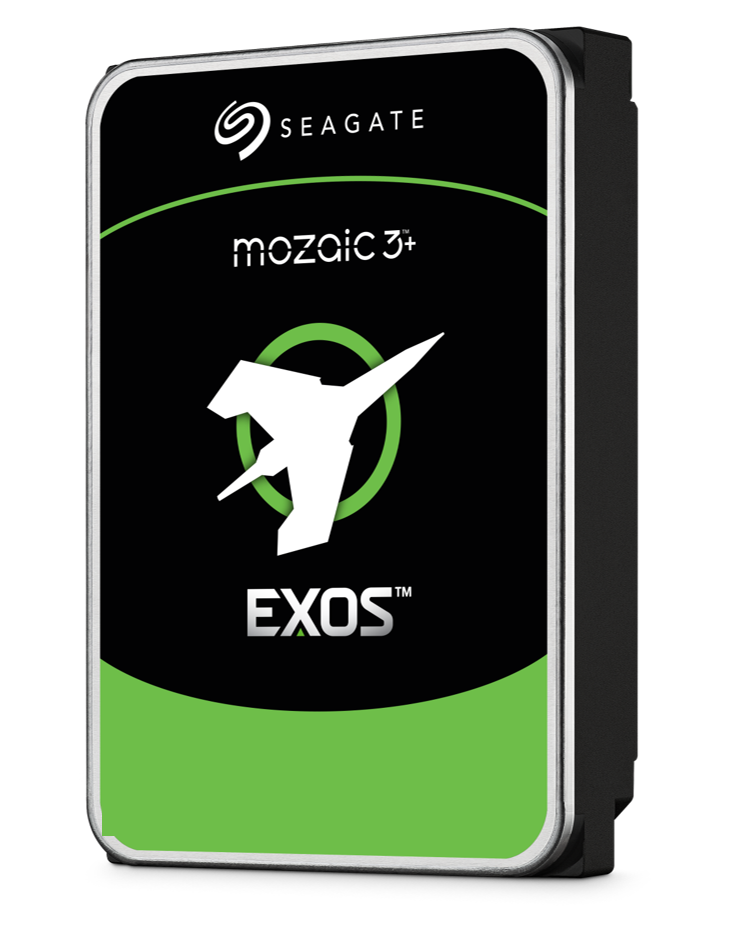- cross-posted to:
- datahoarder
- cross-posted to:
- datahoarder
I would not risk 36TB of data on a single drive let alone a Seagate. Never had a good experience with them.
They seem to be very hit and miss in that there are some models with very low failure rates, but then there are some with very high.
That said, the 36 TB drive is most definitely not meant to be used as a single drive without any redundancy. I have no idea what the big guys at Backblaze for an example, are doing, but I’d want to be able to lose two drives in an array before I lose all my shit. So RAID 6 for me. Still, I’d likely be going with smaller drives because however much a 36 TB drive costs, I don’t wanna feel like I’m spending 2x the cost of one of those just for redundancy lmao
Could you imagine the time it would take to resilver one drive… Crazy.
You couldn’t afford this drive unless you are enterprise so there’s nothing to worry about. They don’t sell them by the 1. You have to buy enough for a rack at once.
Ignoring the Seagate part, which makes sense… Is there a reason with 36TB?
I recall IT people losing their minds when we hit the 1TB, when the average hard drive was like 80GB.
So this growth seems right.
I’m going to remind you that these fuckers are LOUD, like ROARING LOUD, so might not be suitable for your living room server.
Now you can store even more data unsafely!
You are not supposed to use these in a non-redundant config.
Especially these, ye
What about the writing and reading speeds?
If you care about that, spinning rust is not the right solution for you.
I mean, newer server-grade models with independent actuators can easily saturate a SATA 3 connection. As far as speeds go, a raid-5 or raid-6 setup or equivalent should be pretty damn fast, especially if they start rolling out those independent actuators into the consumer market.
As far as latency goes? Yeah, you should stick to solid state…but this breathes new life into the HDD market for sure.
It has some.
The speed usually increases with capacity, but this drive uses HAMR instead of CMR, so it will be interesting to see what effect that has on the speed. The fastest HDDs available now can max out SATA 3 on sequential transfers, but they use dual actuators.
OK…what’s this HAMR technology and how does it play compared to the typical CMR/SMR performance differences?
Heat-Assisted Magnetic Recording. It uses a laser to heat the drive platter, allowing for higher areal density and increased capacity.
I am ignorant on the CMR/SMR differences in performance
I fear HAMR sounds like a variation on the idea of getting a coarser method to prepare the data to be written, just like on SMR. These kind of hard drives are good for slow predictable sequential storage, but they suck at writing more randomly. They’re good for surveillance storage and things like that, but no good for daily use in a computer.
That sounds absolutely fine to me.
Compared to an MVME SSD, which is what I have my OS and software installed on, every spinning disk drive is glacially slow. So it really doesn’t make much of a difference if my archive drive is a little bit slower at random R/W than it otherwise would be.
In fact I wish tape drives weren’t so expensive because I’m pretty sure I’d rather have one of those.
If you need high R/W performance and huge capacity at the same time (like for editing gigantic high resolution videos) you probably want some kind of RAID array.
My poor memory is telling me the heat is used to make the bits easier to flip, so you can use a weaker magnetic field that only affects a smaller area, allowing you to pack in bits more closely. It shouldn’t have the same problem as SMR.
Managing that many files becomes the challenge
I’m still not buying a seagate.
Why?
I bought a seagate. Brand new. 250gb, back when 250gb on one hard drive cost a fuckton.
It sat in a box until I was done burning the files on my old 60gb hard drive onto dvd-r’s.
Finally, like 2 months later, I open the box. Install the drive. Put all the files from dvds onto the hard drive.
And after I finished, 2 weeks later it totally dies. Outside of return window, but within the warranty period. Seagate refused to honor their warranty even though I still had the reciept.
That was like 2005. Western Digital has now gotten my business ever since. Multiple drives bought. Not because the drives die, but because datawise I outgrow them. My current setup is 18TB and a 12TB. I figure by 2027 I’ll need to update that 12TB to a 30TB. Which I assume will still cost $400 at that point.
Return customer? No no. We’ll hassle our customer and send bad vibes. Make him frustrated for ever shopping our brznd! Gotta protect that one time $400 purchase! It’s totally worth losing 20 years of sales!
- Seagate drives are generally way more reliable now than the pre-TB days.
- There is always a risk of premature failure with all hard drives (see the bathtub curve). You should never have only one copy of any data you aren’t okay with losing.
FYI: Backblaze is a cloud storage provider that uses HDDs at scale, and they publish their statistics every year regarding which models have the highest and lowest failure rates.
Backblaze… failure rates
Take this data with a grain of salt. They buy consumer drives and run them in data centers. So unless your use case is similar, you probably won’t see similar results. A “good” drive from their data may fail early in a frequent spin up/down scenario, and a “bad” drive may last forever if you’re not writing very often.
It’s certainly interesting data, but don’t assume it’s directly applicable to your use case.
Is a home NAS a frequent spin up/down scenario though? I’d imagine you’d keep the drives spinning to improve latency and reduce spin-up count. Not that I own any spinning drives currently though - so that’s why I’m wondering.
My drives are usually spun down because it’s not used a ton. Everything runs off my SSD except data access, so unless there’s a backup or I’m watching a movie or something, the drives don’t MHD need to be spinning.
If I was running an office NAS or something, I’d probably keep them spinning, but it’s just me and my family, so usage is pretty infrequent.
Sure, YMMV for any statistical study but it’s also the best source that exists for stats on consumer Hard Drives tested at scale.
It’s absolutely useful data, but there are a bunch of caveats that are easy to ignore.
For example, it’s easy to sort by failure rate and pick the manufacturer with the lowest number. But failures are clustered around the first 18 months of ownership, so this is more a measure of QC for these drives and less of a “how long will this drive last” thing. You’re unlikely to be buying those specific drives or run them as hard as Backblaze does.
Also, while Seagate has the highest failure rates, they are also some of the oldest drives in the report. So for the average user, this largely impacts how likely they are to get a bad drive, not how long a good drive will likely last. The former question matters more for a storage company because they need to pay people to handle drives, whereas a user cares more about second question, and the study doesn’t really address that second question.
The info is certainly interesting, just be careful about what conclusions you draw. Personally, as long as the drive has >=3 year warranty and the company honors it without hassle, I’ll avoid the worst capacities and pick based on price and features.
Or just read their raw charts. Their claims don’t tend to line up with their data. But their data does show that Seagate tends to fail early
All that tells you is that Seagate drives fail more in their use case. You also need to notice that they’ve consistently had more Seagate drives than HGST or WD, which have lower failure rates on their data. Since they keep buying them, they must see better overall value from them.
You likely don’t have that same use case, so you shouldn’t necessarily copy their buying choices or knee-jerk avoid drives with higher failure rates.
What’s more useful IMO is finding trends, like failure rate by drive size. 10TB drives seem to suck across the board, while 16TB drives are really reliable.
Ye, Seagate is cheap, that’s the value. I’ve had a tonne myself and they’re terrible for my use too
As @[email protected] said, infant mortality is a concern with spinning disks, if I recall (been out of reliability for a few years) things like bearings are super sensitive to handling and storage, vibrations and the like can totally cause microscopic damage causing premature failure, once they’re good though they’re good until they wear out. A lot of electronics follow that or the infant mortality curve, stuff dying out of the box sucks, but it’s not unexpected from a reliability POV.
Shitty of Seagate not to honour the warranty, that’d turn me off as well. Mine is pettier, when I was building my nas/server I initially bought some WD reds, returned those and went for some Seagate ironwolf drives because the reds made this really irritating whine you could hear across the room, at the time we had a single room apartment so was no good.
I’ve had a lot of seagates simply because they’re the cheapest crap on the market and my budget was low. But unfortunately, crap is what you get.
I’ve bought 2 Seagate drives and both have failed. Meanwhile, I still have my 2 15yo WD drives working.
I hope I didn’t just jinx myself. Lol
I’ve got the opposite experience, with WD.
You know who uses loads of Seagate drives? Backblaze. They also publish the stats. They wouldn’t be buying Seagate drives if they were significantly worse than the others.
The important thing is to back up your shit. All drives fail.
Click…click…click…click…
I get it, I’ve had the opposite experience with wd, but they were 2.5” portable drives. All my desktop stuff works perfectly still 🤞
Same here. I have a media server and just spent an afternoon of my weekend replacing a failed Seagate drive that was only used to to backup my more important files nightly that was purchased maybe 4-5 years ago. In the past 10 years, this is the third failed Seagate drive I’ve encountered (out of 5 total) while I have 9 WD drives that have had zero issues. One of them is even dedicated to torrents with constant R/W that is still chugging along just fine.
They have had reliability issues in the past.
Nearly all brands have produced unreliable and a reliable series of hard drives.
Really have to look at them based on series / tech.
None of the big spinning rust brands really can be labeled as unreliable across the board
Backblaze.com gives stats on drive failures across their datacenters:
https://www.backblaze.com/blog/backblaze-drive-stats-for-q3-2024/
Seagate’s results stick out. Most of the drives with >2% failure rates are theirs. They even have one model over 11%.
Why would Backblaze use so many Seagate drives if they’re significantly worse? Seagate also has some of the highest Drive Days on that chart. It’s clear Backblaze doesn’t think they’re bad drives for their business.
I can only speculate on why. Perhaps they come as a package deal with servers, and they would prefer to avoid them otherwise.
There are plenty of drives of equivalent or more runtime than the Seagate drives. They cycle their drives every 10 years regardless of failure. The standout failure rate, the Seagate ST12000NM0007 at 11.77% failure, has less than half that average age.
Seconding this. Anecdotally from my last job in support, every drive failure we had was a Seagate. WDs and samsungs never seemed to have an issue.
Got a source on that? According to Backblaze, Seagate seems to be doing okay (Backblaze Drive Stats for Q1 2024 https://www.backblaze.com/blog/backblaze-drive-stats-for-q1-2024/), especially given how many models are in operation.
I wouldn’t call those numbers okay. They have noticeably higher failure rates than anybody else. On that particular report, they’re the only ones with failure rates >3% (save for one Toshiba and one HGST), and they go as high as 12.98%. Most drives on this list are <1%, but most of the Seagate drives are over that. Perhaps you can say that you’re not likely to encounter issues no matter what brand you buy, but the fact is that you’re substantially more likely to have issues with Seagate.
Looks like another person commented above you with some stuff. I recall looking this up a year ago and the ssd I was looking at was in the news for unreliability. It was just that specific model.
What brand is currently recommended? WD is taking the enshittification highway…
Latest story I know of: https://arstechnica.com/gadgets/2023/06/clearly-predatory-western-digital-sparks-panic-anger-for-age-shaming-hdds/
Only ssd for me
Yeah, but I can’t afford 2TB of SSD, and I need to expand soon.
You can’t get SSDs that big except for some extremely expensive enterprise drives.







